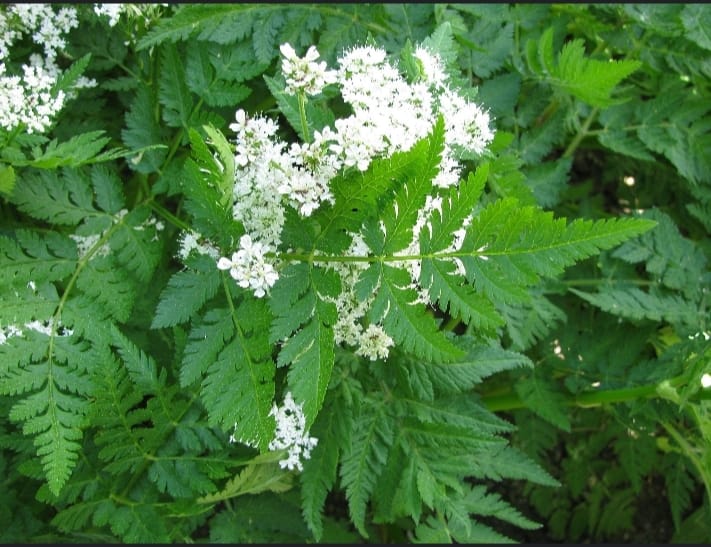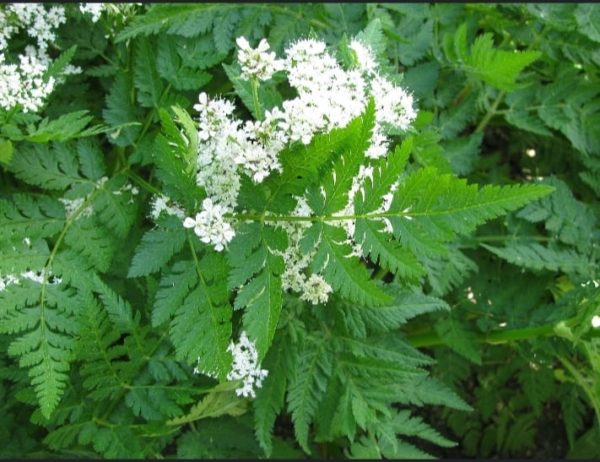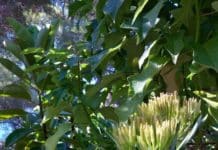Sweet cicely – Myrrhis odorata – is an attractive, early blooming perennial herb, with delicate, fern-like foliage, clusters of tiny white flowers – and a pleasant, anise-like aroma!
Sweet cicely plants are known by a number of alternate names, including garden myrrh, fern-leaved chervil, shepherd’s needle, and sweet-scented myrrh.
The plants are rich in nectar and highly valuable to bees and other beneficial insects.
Sweet cicely grows best, when planted in a sunny or partial shady area, that has moist, but well-draining soil.
You can plant sweet cicely seeds directly in the garden in autumn, as the seeds germinate in spring after several weeks of cold winter weather followed by warm temperatures. You can also divide mature plants in spring or autumn.
Care is definitely not involved. Just water as needed to keep the soil moist, as sweet cicely generally needs about 2.5 cm of water, weekly. Fertilise regularly, with any general purpose plant fertiliser.
While sweet cicely isn’t considered invasive, it can be quite aggressive. Remove the blooms, before they set seed, if you don’t want it to spread.
All parts of sweet cicely plants are edible. You can cook the leaves like spinach, or add fresh leaves to salads, soups, or omelettes. Stalks can be used, much like celery; roots can be boiled or eaten raw – and you can also make flavourful wine with them!
The plant is easy to dry and retains its sweet aroma, even when dried.






